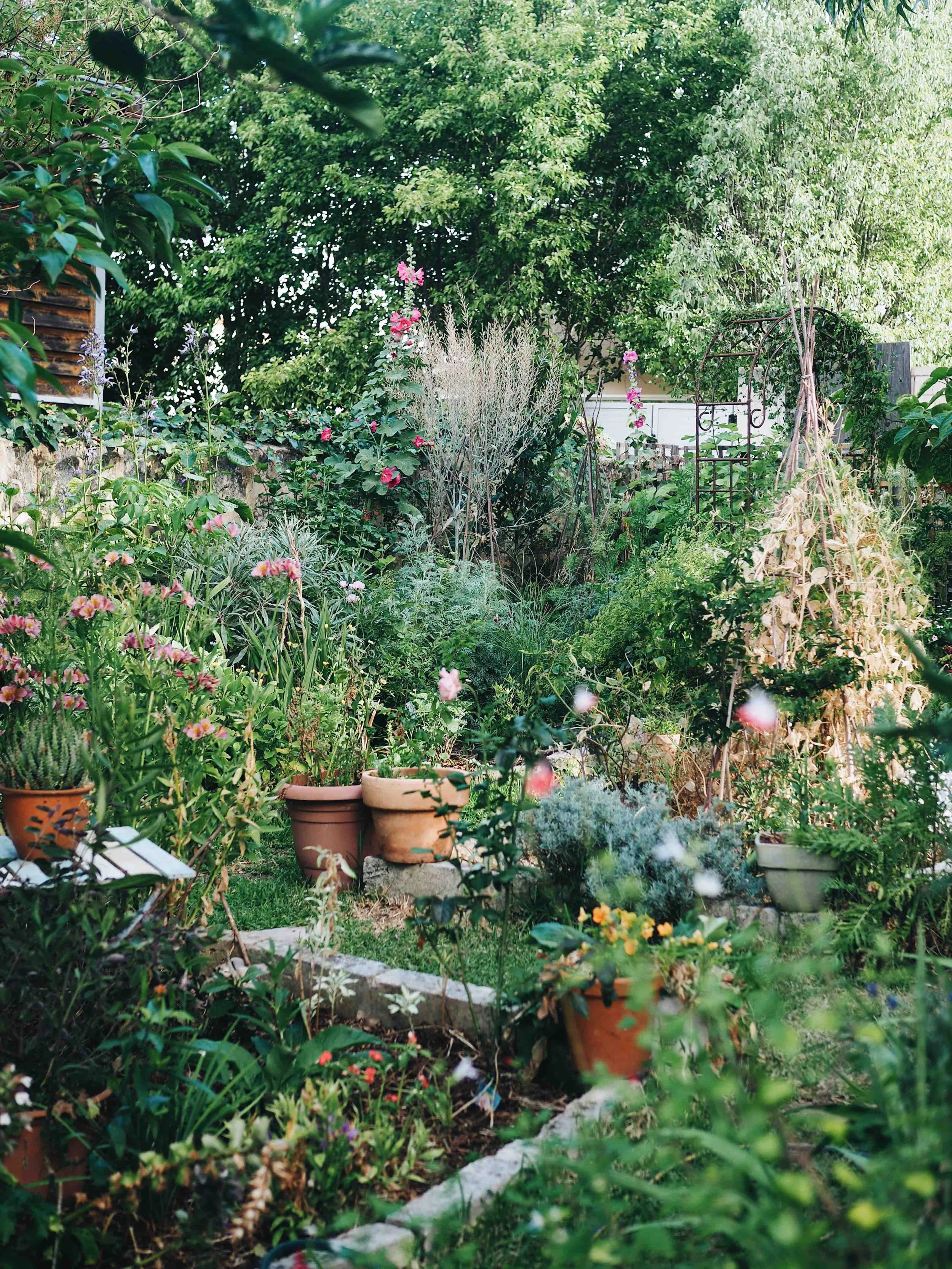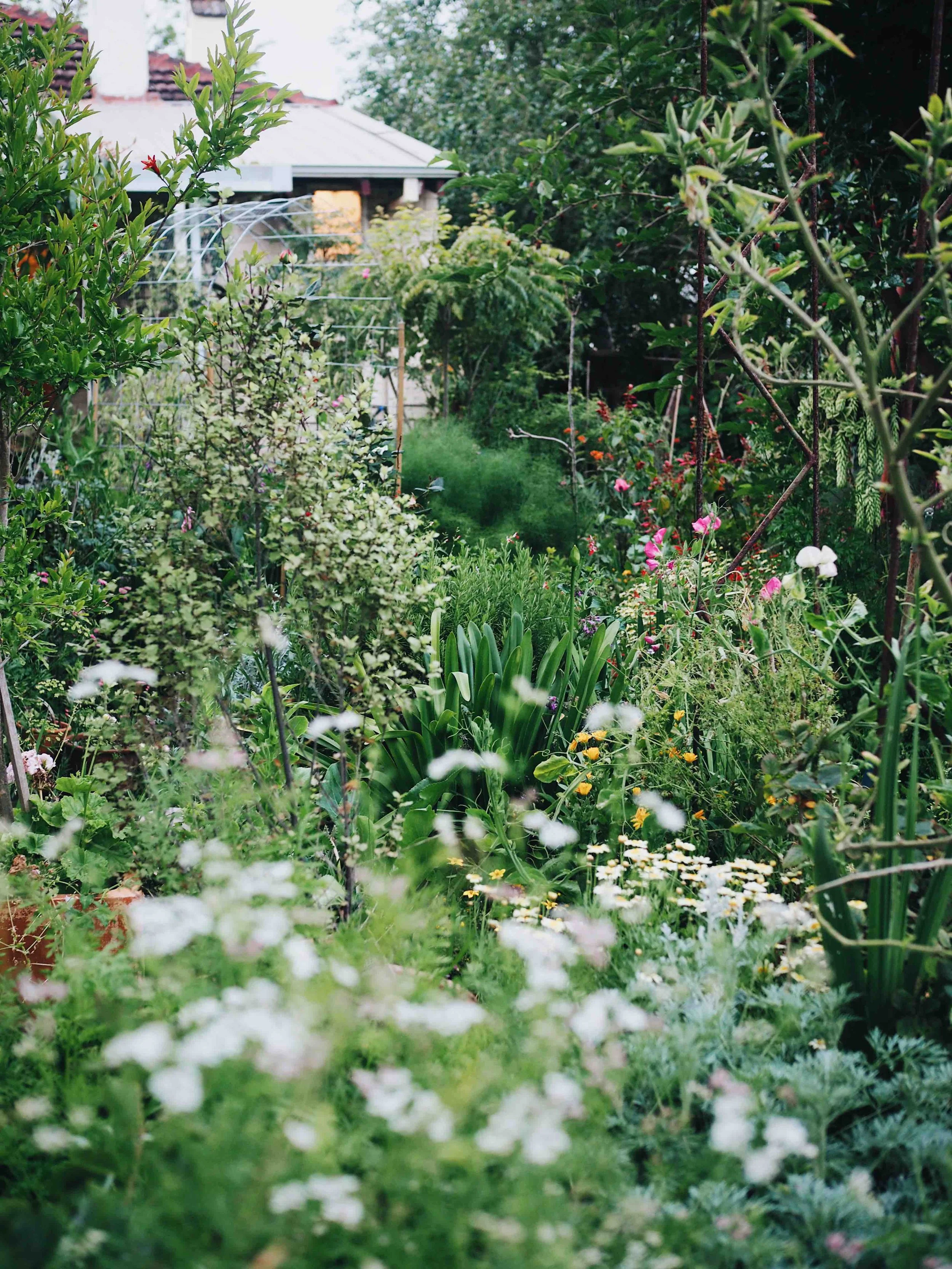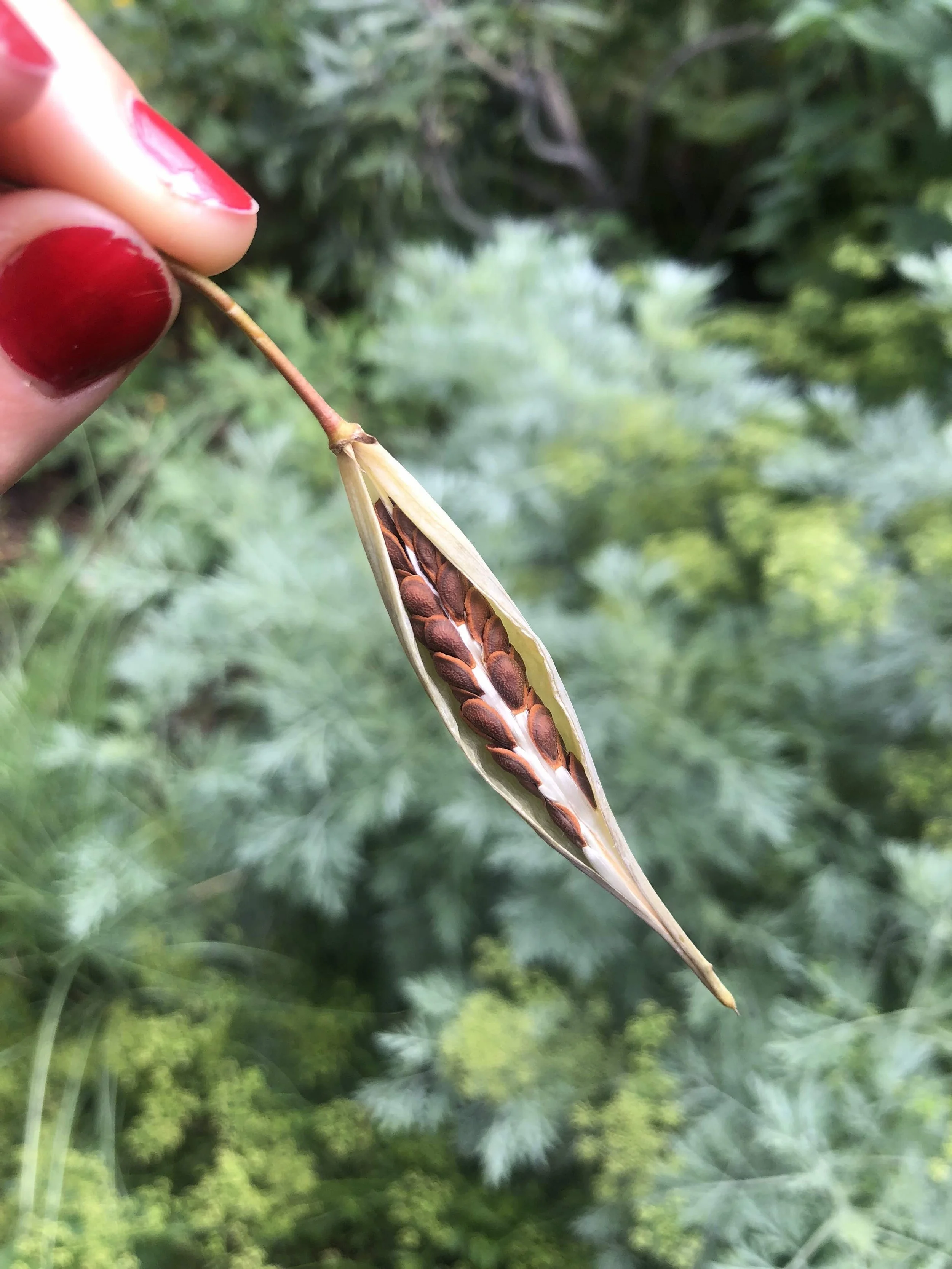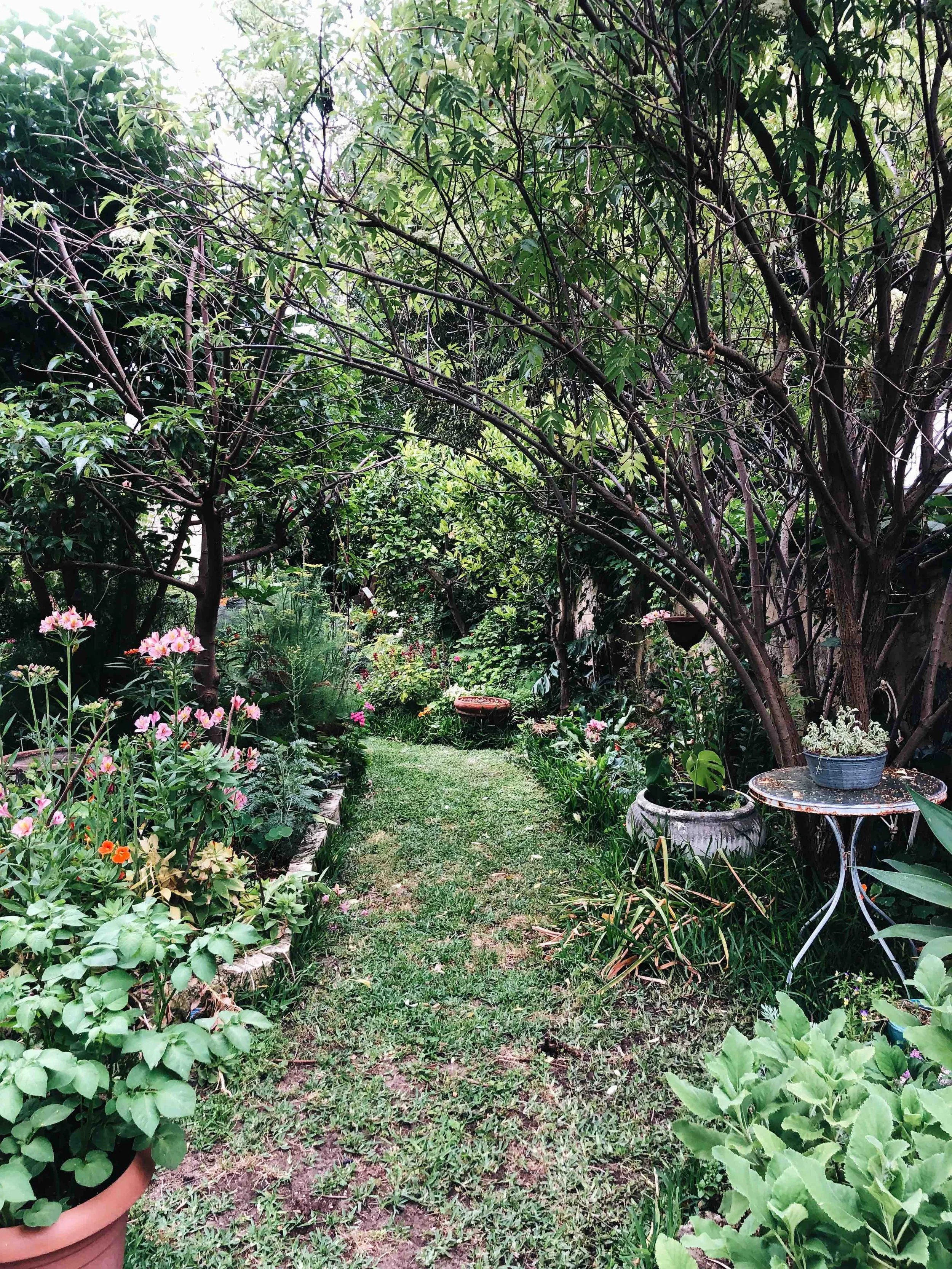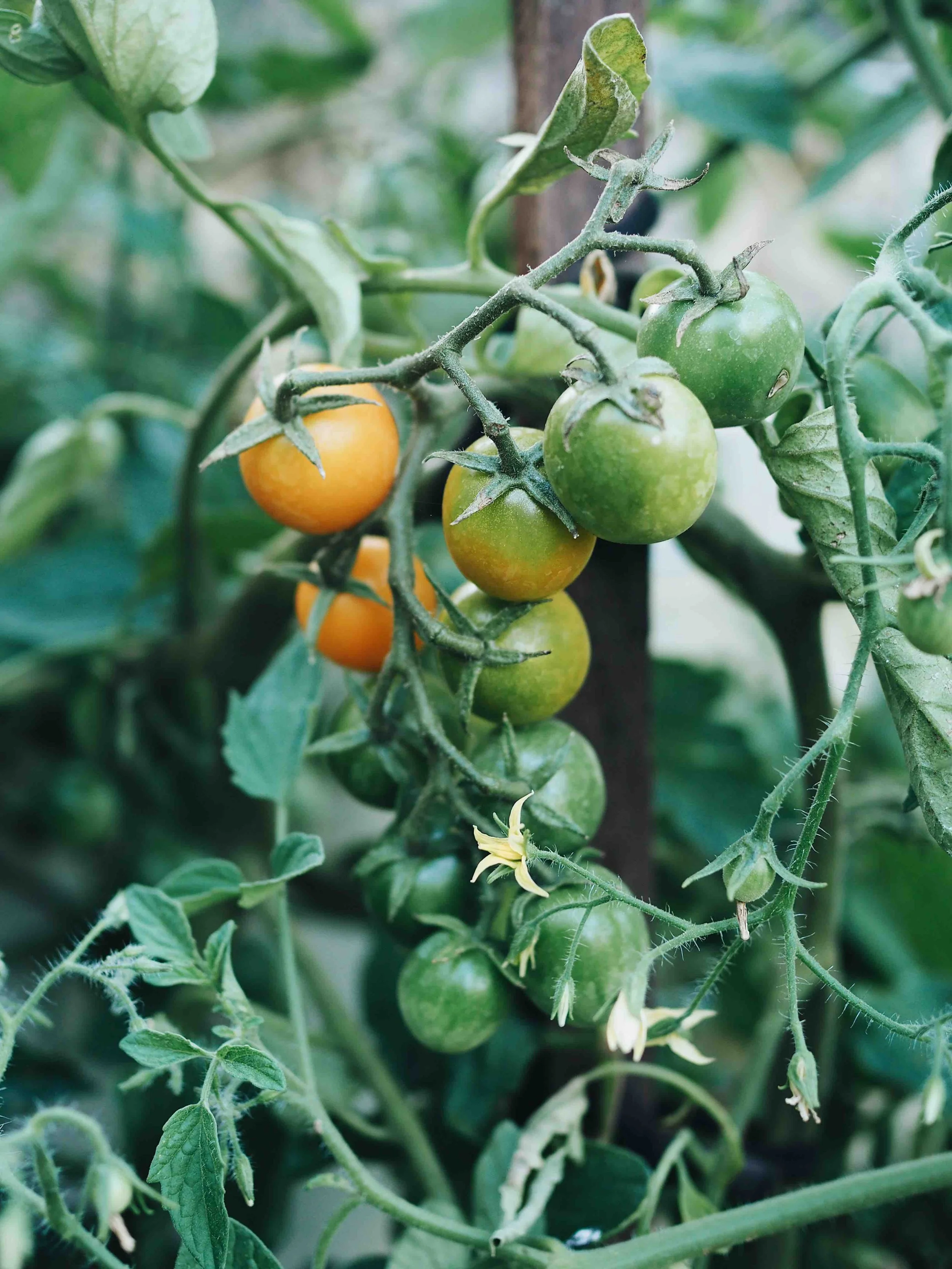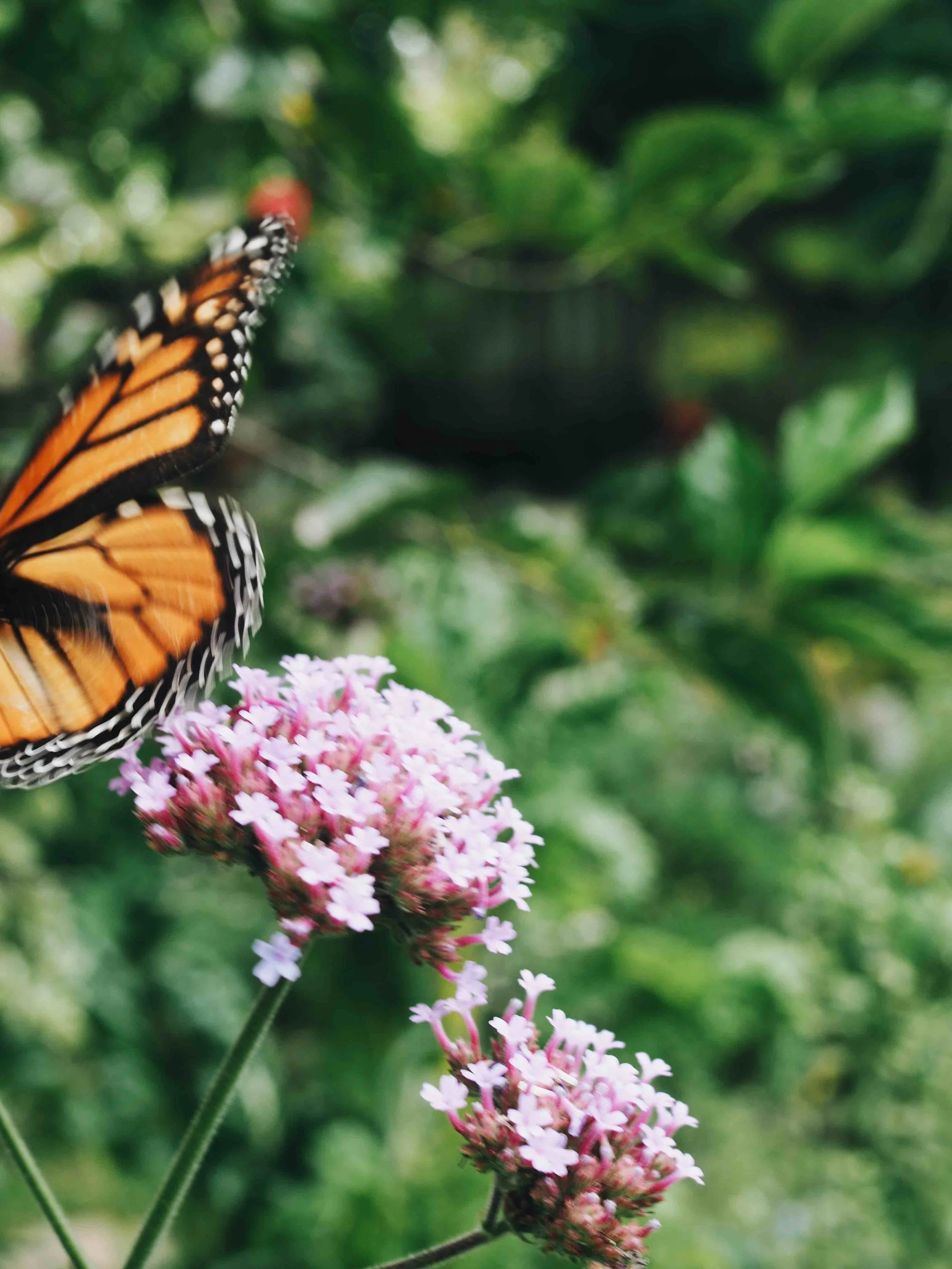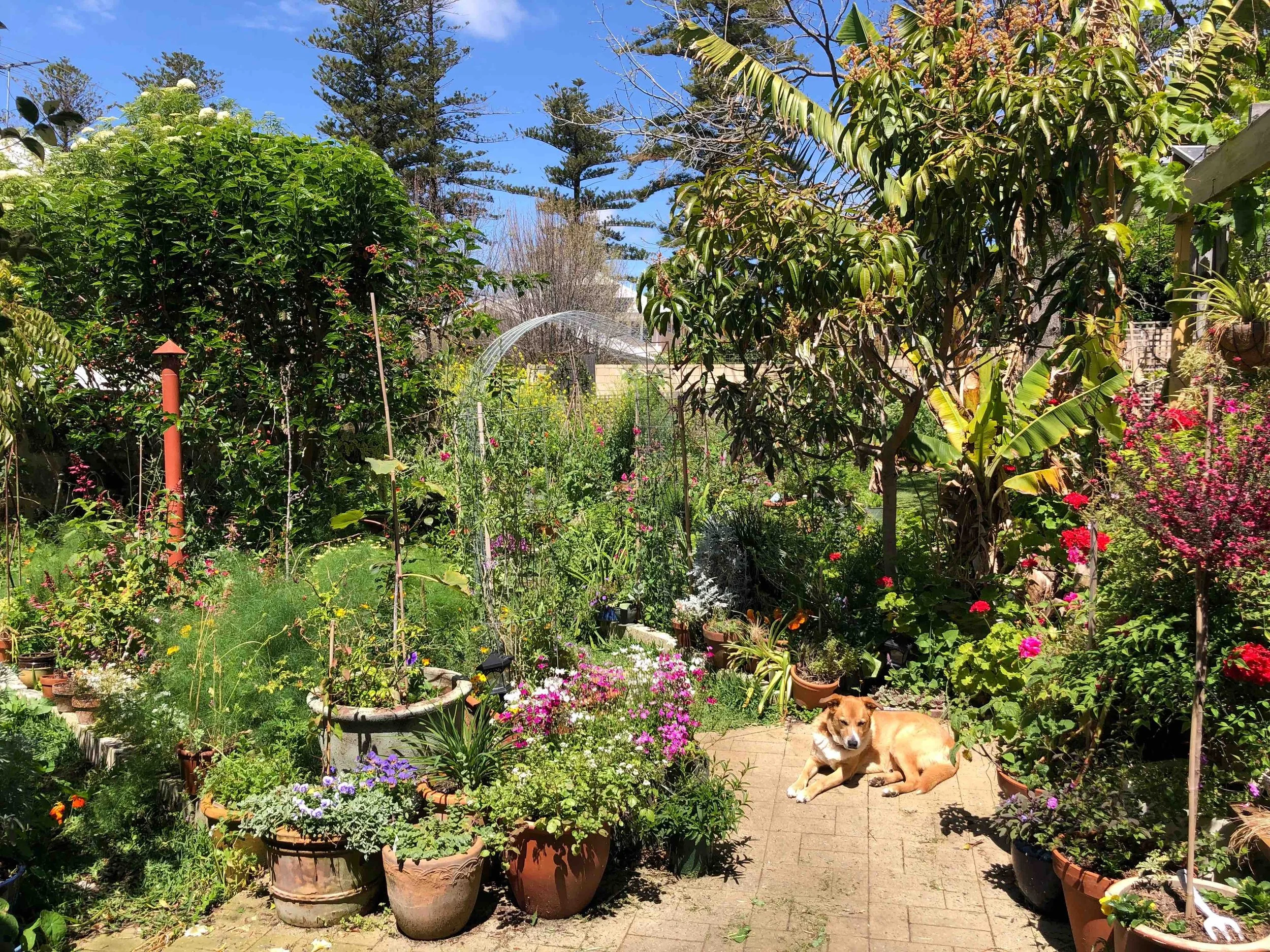Beginner Gardener? Avoid These Common Mistakes
It’s a new year. Twenty-twenty-two. If you set your clock by the Terminator movies this would be the decade that humans embark on a war with super intelligent robotic killing machines, nuke the earth into oblivion and turn the skies black with debris. In fact, according to the Terminator timeline we’d still have a full 7 years to go until (in 2029) John Connor leads the resistance and finally defeats our robot overlords.
So you see? Things could be worse.
As it is, we’re all only partially enslaved to our computers, nuclear proliferation is chugging along nicely but as yet there are no signs of imminent war, and instead of waging an impossible battle against murderous robots we’re all just fighting a global pandemic. Now that’s what I call a glass half full!
Seriously though. New Years are supposed to be about fresh starts, new beginnings, hopes, dreams and aspirations. But if you’re already over 2022 (it seems to be shockingly similar to 2020 and 2021, doesn’t it?), I understand. Me too.
Unfortunately, when it comes to global pandemics (much like Terminator attacks) there’s not a lot we can control. The 2020s, so far, feel more like waiting out the world’s longest storm than #livingyourbestlife. But if there was one good thing to come from all this, one silver lining to be had from ‘sheltering in place’, working from home and empty supermarket aisles, it would be the resurgence of interest in gardening. In uncertain times, our gardens provide us with structure, they give us hope, a creative outlet, even our own food.
Given how many people are embarking on their own gardening adventures this year, I figured the time was ripe for a blog post about 50 common gardening mistakes (and how to avoid them).
Although the title of this post is common gardening ‘mistakes’ I want to start with a little caveat: I don’t really think we make ‘mistakes’ in our gardens.
Gardens are messy, nuanced, complicated and ever-changing places. And so learning to grow a garden is always going to be a case of trial and error, experimentation and happy accidents. Making mistakes really is the best way to learn, so I don’t want to give you the impression that mistakes are bad or should be avoided (I do, by the way, realise I have included the exact phrase 'avoid these common mistakes’ in the title - forgive me; I’m flawed, full of caffeine and contradictions and my head hurts).
Point is, this is really just a big list of things that might make your job of growing a garden slightly more difficult. It’s no big deal if you do any of these things anyway - time and experience are the greatest teachers and you’ll learn all these gardening lessons in the course of growing your own garden. But if you’re impatient to get going, if you want to shortcut a few of the more irritating lessons and get yourself off to a successful start, these are a few of my top tips. Gardening ‘mistakes’ that I’ve made myself countless times, gardening basics that I’ve see others regularly overlook, and just useful common sense ideas that you might not have come across. Plus a few things that probably aren’t worth your time/money/attention.
I hope you find them useful and I hope that - whatever else 2022 brings our way - it brings you new buds, green leaves and sun drenched mornings in your garden.
10 broad blunders
To begin, here are 10 big ‘mistakes’ that I see people make when they’re starting her gardens. These are about mindset and bad habits that end up giving you more work and heartache in the long run. Fix these guys up and your job as gardener will become simpler and much, much more fun.
1. Making a ‘mistake’ and giving up
My biggest problem with the idea of making ‘mistakes’ in the garden is that it creates a mindset where we beat ourselves up when something goes wrong. The truth is: sometimes plants just die. Hell, I’ve killed heaps of plants! I’ve killed azaleas, grevilleas, apples and maple trees. I’ve ripped out half-dead plants and chucked them uncaringly into the compost heap. I’ve overwatered orchids until they rotted and I’ve deprived petunias of water until they died of thirst. I have noticed scale on roses and done nothing until, months later, I’ve ripped them, brown and brittle, from the ground. I’ve severed tap roots with shovels, I’ve left seedlings in their trays so long they gave up all hope of a better life, I’ve treated my moonflower terribly, I refuse to plant a camellia ever again, I’m no friend of the hydrangea and don’t even get me started on fiddle leaf figs.
I think I’m a pretty good gardener (I can appreciate that may come as a shock after the previous paragraph). But it’s not because I haven’t killed my fair share of plants. It’s because I don’t get too wound up about death in the garden. I rarely let it deter me and I never let it stop me. When something goes wrong, I adjust. I try something new. I try again. Time, mistakes and a refusal to give up is what makes a good gardener. There’s no such thing as a black thumb; there are people who keep on trying in their gardens and those who give up when their first plant shrivels. Just never stop and you’ll be a fantastic gardener in no time.
2. Forgetting to nurture wildlife
A wildlife friendly garden is your best form of ‘pest’ control. Ditch the pesticides, insecticides & fungicides, encourage birds into your patch and before long your garden will reach a natural balance (and less of your plants will be decimated by bugs).
3. Neglecting soil and forgetting to mulch
A healthy garden starts with healthy soil. And honestly? Without healthy soil it is SO much harder to grow a garden successfully. Make enriching the soil your number one priority in your garden - I promise you won’t regret it (and check out my blog post on tips for soil improvement to help you get started).
4. Forgetting to observe & experiment
We learn the most from our gardens when we step back and allow ourselves the time to observe. Try to pay attention to the sun, your soil and the lifeforms in your garden. Notice which areas of our yard get sunlight and which lie in shade (and how that changes over the seasons). Notice which plants attract different insects, or how the wind moves through the garden. Taking the time to observe your garden helps you understand it more deeply and can ultimately make it a lot easier to diagnose problems or work out what will grow successfully in your yard. Here are 5 things worth understanding deeply about your garden.
5. Freaking out and trying to ‘fix’ things
Taking time to observe your garden shouldn’t just be a habit when things are going right, it should also be your go-to first step when stuff goes wrong. It’s easy to spot a sick or diseased plant and want to jump right into action. That’s why garden centres are full of sprays, fertilisers, powders and pellets - they’re all catering to our need to DO SOMETHING - anything - at the first sign of trouble. Thing is, very often the more we throw at a problem the less we understand it. And a LOT of plant problems actually resolve themselves over time. I’m not saying you should never do anything in the face of a sickly plant, but try not to rush into action - give yourself some time to watch and wait. You might learn more about what’s going on for next time, or the plant might just decide to get better on its own (and try not to stress out too much while you’re waiting - remember: sometimes plants just die).
6. Doing too much too fast
Gardening is exciting and it’s easy to take on way too much before you know what you’re getting yourself into. My advice: start small. I started with just a few potted flowers and it was years before I got to the ‘digging up all my lawn’ stage. Starting small lets you expand your garden naturally - the garden grows as your confidence and abilities grow. Taking on too much too soon leads to overwhelm and can be really frustrating if things don’t work out. Life is long, gardens are great, you can afford to take things slow at the start.
7. Planting out of season (or for the wrong climate)
One of my biggest vegetable gardening tips for beginners is: make sure you’re growing plants that are in season and that suit your climate. It can take a little while to get a feel for which veggies are summer veg and which are winter veg, but you’ll get the hang of it. Pay attention to advice on the seed packets, and don’t assume that everything on the shelves at the garden centre is actually in season (I’ve seen corn and basil seedlings for sale in March when both are summer crops that will died back as the weather cools).
8. Watering too much or too little (usually too little)
To be honest, I hate this piece of advice. If you’re a beginner gardener and you’re advised ‘don’t water too much OR too little’ what are you meant to think?? How much is too much? How much is too little? How much is just right? It’s entirely stress inducing! Here’s my rule of thumb: if you live in Perth and you’re growing plants outdoors, it’s really hard to overwater. Your plants will probably enjoy the extra drink and if your soil is sandy like mine it’s unlikely you’ll kill anything from overwatering. If you’re growing indoor plants, the opposite is true. Usually they thrive on neglect and you’ll kill many more from overwatering than you will from under-watering.
9. Ignoring useful design tactics
A well designed garden makes gardening easier. It’s got structure so you can let it get a little wild without it looking messy, it has trees (which provide shade and help attract wildlife), and it makes the most of environmental features like sun, wind and rain, helping you grow plants that thrive in your particular garden conditions. That said, it can be really hard to even know how to begin to design a garden from scratch. Check out this blog post for some basic garden design tips on landscaping from the ground up.
10. Leaving garden beds empty
You know how when you play the Sims and your sim has just finished dinner and has a full green hunger bar? That’s how I picture a fresh bed of fully enriched soil. It’s got a full green bar of health. If that garden bed is then left empty without anything planted in it, I imagine that bar slowly dropping lower and lower and lower. Soil is healthier when it has plants in it (it’s also healthier when it is mulched!). Plants spread their roots down into the soil, helping to aerate it and direct water further into the ground. Their leaves help shield the soil from the sun’s rays, protecting the beneficial microbes that live in healthy soil and keeping the soil moist for longer on hot days. So once you’ve put the effort into boosting your soil, the best thing you can do is: plant it (and mulch it) ASAP!
40 bite-sized miscalculations
Now we’ve covered the big 10 mistakes to avoid when starting out, here’s a quick fire list of 40 other common hiccups I’ve made (or spied other people making) in the garden, organised by category.
Seed sowing slip ups
11. Sowing seeds too deeply. Avoid planting small seeds too deep in the soil - make sure to follow the instructions on the packet as many smaller seeds won’t germinate if they are planted too deeply. For more tips on saving, storing and sowing seeds, check out this blog post.
12. Forgetting to water. Freshly sown seeds need to be kept moist after they germinate and can quickly die if allowed to dry out. Make sure to keep the soil moist (especially on hot days).
13. Sowing in the wrong season. Many seeds won’t germinate if the soil temperature isn’t right. This is especially true if you try to sow warm-weather seeds (like chillies, tomatoes, cucumbers or eggplant) in winter. Make sure you’re sowing your seeds in the right season for them to grow.
14. Sowing in the wrong medium. Cheaper, lower quality seed-raising mixes often result in lower germination rate. You tend to get what you pay for with seed raising mix, and you’ll have more seed-sowing success if you pick a good one (to save money, you can fill your seed raising pots 2/3 full with a cheaper potting mix, then fill the last 1/3 with the good quality seed raising mix).
15. Using small or dodgy pots. Tiny seed-raising punnets with small cells, toilet paper rolls or cardboard so-called ‘decomposing’ pots tend to dry out quickly and dont have enough space for your seedlings to stretch their roots. The ‘decomposing’ ones also almost never actually break down, leaving you with plants that are basically pot-bound in the soil. Ditch them all and go for larger punnets with bigger cells for each seedling - it will help the soil stay moist and give the seedlings more time to grow big and strong. I also prefer to use punnets (with individual partitions) than big seedling trays as neighbouring seedlings often get tangled roots when they grow close together in trays.
16. Rough watering. Use a fine mist when watering your seeds - rough watering with a hose can knock your seeds out of the soil!
17. Starting seeds inside (or in low light). The idea of starting seeds on a sunny windowsill is romantic, but 9 times out of 10 the windowsill just isn’t sunny enough to give your seeds the best start in life. Much better to find a spot outside that gets morning sunshine and dappled afternoon shade (starting seeds outside also helps them grow tougher and stronger in the long run).
18. Forgetting to label. Hello! That’s me! I do this all the time and repeatedly kick myself for it. Believe me: you will NEVER remember what you sowed (or where) two days after you’ve done it. If you want to grow anything other than ‘mystery seedlings’ label everything as soon as you sow it!
19. Sowing old seeds. Seeds lose viability and their germination rate drops with every year you keep them in storage. That said, I’ve successfully sown and grown old, mouldy broad beans, so it’s always worth a shot (and I’d always rather throw seeds into the garden than into the bin!). But aim to sow your seeds within 1-2 years of buying/collecting them for optimal viability and germination success.
20. Getting impatient. Some seeds take AGES to germinate. Chillies can take up to 3 weeks (especially if the weather is still a little cold) and there are Australian natives that take upwards of 6 months. I have often given up totally on my seeds germinating, only to find their happy faces pop up out of the soil a few days later. So, be patient, and give your seeds a good long chance to germinate before you go chucking the soil.
Seedling fiascos
21. Damaging seedlings when transplanting. The main parts you want to protect are the teeny fragile stem and the root system. Try to hold your seedlings by the leaves (it’s not so bad if you damage a leaf) rather than the stem, and avoid breaking their roots as much as possible when you move them from the seedling tray to the soil.
22. Transplanting carrots and other root vegetables. If you’ve been growing funky, wonky carrots, chances are they weren’t sown direct. If you want straight, neat carrots, you have to sow them where you plan to grow them and never shift them. When you transplant carrot seedlings, any slight knock to the root (which is IMPOSSIBLE to avoid) will cause it to grow in a funny, squiggly shape. They still taste fine so if you don’t mind the funky shape go ahead, but if you want straight carrots you need to plant them in one spot and never shift them (I like to plant mine in a large tub filled with a good quality potting mix - works a treat!). Note: this isn’t SUCH a problem for other root veggies like radishes or beetroot (because they don’t need to grow as long and straight), but I prefer to sow those direct too.
23. Planting out in the garden when still too little. Seedlings are teeny, vulnerable and very attractive to bugs. If you plant them out when they’re still little they are much more likely to get eaten. This is particularly true of plants in the Brassica family (e.g., cabbages, broccoli, cauliflower), which are like crack to caterpillars. Instead of resorting to pesticides and pellets, just ‘pot on’ your seedlings into a larger pot filled with a good quality potting mix. Let them grow there until they’re at least 10-15cm tall. By this time the plants will have developed a tougher stem and leaves and will be less susceptible to munching by bugs.
24. Planting out too close together. All plants look teeny when they’re seedlings, but don’t forget to account for how big they’ll get once they’re mature. Veggies like zucchinis, pumpkins and tomatoes need a lot of space to stretch out, so make sure to check how big your plant will end up and to space your garden accordingly.
25. Planting out multiple seedlings in the same hole. Shop-bought seedling punnets often come with more than one plant per cell. This can be tricky to spot at first, but once you’ve noticed it you’ll start seeing it all the time. This is especially true for things like onions and spring onions - often there are tens of seedlings in a single cell. Avoid planting the seedlings into the same hole as they will crowd each other out. It’s much better to split them up gently (you can try soaking them in water for 10 minutes to help disentangle their roots) and plant out in separate holes. You might lose some seedlings as a result of ripping their roots, but most plants usually make it and you avoid crowding out your seedlings by accidentally planting them on top of each other.
Veggie clangers
26. Growing in pots that are too small. You can grow most veggies in pots provided the pots are big enough, but people often underestimate just how much space their veggies need to grow. Aim to go bigger rather than smaller, and if in doubt, google ‘plant name + root depth’ to make sure you’ve selected a pot that is big enough for your plant.
27. Using ‘thin’ soil that doesn’t have enough nutrients. All plants need good soil to thrive, but this is especially true for veggies, which tend to grow fast and require a lot of nutrients. Of all the soil in your garden, make sure the soil that your veggie plants go in is the richest and healthiest, and boost it up regularly with added manure and mulch.
28. Forgetting to harvest. Even after a decade I still do this one!! But I’m working on getting better. It can be strangely hard to bring yourself to harvest your beautiful veggies and fruit when they look so amazing on the plant, but if ripe fruit is left on the plant for too long the plant will take it as a sign it doesn’t need to produce any more and your harvest will end. So pick and enjoy!
29. Planting corn in a straight line. Corn is wind pollinate - for successful fertilisation (and a cob filled with tasty kernels) pollen needs to fall from the male tassels at the top of the plant down onto the female silks that protrude from each cob. If you plant your corn in a single straight line, there’s a good chance the wind will simply blow the pollen away and it will never reach the silks. Plant your corn in a matrix/grid instead - this way, no matter which direction the wind blows you’ll have some pollen blown towards the waiting silks.
30. Overhead watering of tomatoes, zucchinis and pumpkins. Overhead watering can increase the chance that certain plants will develop fungal diseases. Instead, go for drip irrigation or water the plants gently at their base (mulching can also help prevent fungal diseases).
31. Not planting tomato seedlings deeply. Tomato seedlings like to be planted deeply - they’ll send more roots out along their stem, resulting in a deeper root system and protection from drought. So, when transplanting your tomato seedlings, remove the lower leaves and plant them so that just the top few leaves protrude above the soil (if in doubt, check youtube for a tutorial). .
32. Growing invasive ‘runner’ plants in garden beds. Lovely as they are, plants like mint (which spreads like crazy), lemongrass (which can grow HUGE) and sweet potatoes will take over an entire garden bed if you let them. Avoid planting these plants in large garden beds, as they’ll eventually grow through the entire patch. Plant mint and lemongrass in pots and grow sweet potato somewhere you won’t mind it taking over.
Herb and flower fails
33. Forgetting to deadhead flowers. Much like picking ripe fruit, removing (or ‘deadheading’) spent flowers off your roses, daisies and other flowering plants will extend their flowering season. If the dead flower heads are left on, the plant will take this as a cue to set seed and it will stop flowering prematurely.
34. Buying only low-pollen flowers. Healthy gardens are filled with pollinators and beneficial insects. And many of these bugs are attracted by pollen-rich gardens. Avoid buying only low-pollen flowers (like pansies or vincas), as these won’t help attract pollinators to your patch. It’s fine to grow plants like that, but be sure to add pollen-rich plants as well, like borage, calendula, marigolds and comfrey.
35. Not letting herbs & veggies go to flower. Many of the best pollinator-attracting plants are actually your herbs and veggies - you just have to let them grow long enough that they flower. Leave some broccoli, fennel, mustard greens, parsley, carrots, lettuce and radishes in the ground and they’ll produce gorgeous flowers in spring. Let other herbs like basil, coriander and caraway flower too. These plants produce gorgeous flowers in their own right (they could just as easily be grown as ornamentals IMO!) and their flowers are choc full with pollen for the bees. And once they’ve flowered you can collect their seeds to sow again - bonus!
Soil oversights
36. Digging and turning the soil. If you’re sick of digging and turning your soil, I have good news: you don’t need to! Use the no dig gardening method instead. This sounds like exactly what it is - you just stop digging your soil. Digging soil can destroy its structure, making it more compact over time. It also brings seeds from weeds to the surface, meaning you have more weeding to do as well! My advice: pack the whole thing in entirely. Only dig when you need a hole to plant a new plant, and use a nice thick lupin mulch - it will suppress any weeds that pop up and feed your soil too.
37. Forgetting to replenish soil regularly. Soil is not a one-and-done kinda thing. And all kinds of soil are improved by the regular addition of organic matter (e.g., mulch or compost). For extra healthy plants (and especially if you plan to grow veggies) make sure to regularly add animal manure to your soil as well - it provides the macronutrients that plants need to grow healthy and strong. I am to boost my soil with clay, animal manure and lupin mulch 3-4 times a year (you can read more about how I improve my soil here).
38. Using chemical fertilisers. Chemical fertilisers won’t help your garden or improve your soil long-term. In fact, they may lead to poorer garden health in the long run. It’s much better to add nutrients to your soil in the form of compost and animal manure - they’ll help improve your soil structure as well as providing nutrients for plant growth.
39. Over-fertilising. Over-fertilising (e.g., from using a heap of chemical fertilisers) can cause rapid plant growth. This might seem like a good thing, but if your plants grow too fast they can wind up weak and easy pray for bugs that want to munch on them. For other plants - like some root veggies - over-fertilising (i.e., adding more nitrogen than they need) can cause the plants to grow really leafy at the expense of the root (which is the part you wanted in the first place!).
40. Half-hearted soil improvement. My garden hero Monty Don says it’s better to improve a small patch of soil REALLY well than to do a halfhearted job over your entire garden and ultimately improve nothing. If you don’t have enough manure and mulch to do your whole garden thoroughly, focus on just one section at a time instead.
41. Using wood chip mulch. Look, I guess it has its place, but I really hate wood chip mulch. It’s used in public spaces mainly to suppress weeds, so that should give you a clue as to its effect on most plants! Unlike lupin mulch (which I love!) wood chip mulch doesn’t contain any nitrogen, so it doesn’t really feed your plants. The only thing it adds as it breaks down (which, incidentally, takes ages) is carbon. In fact, it may actually leach other nutrients OUT of the soil as it breaks down, leaving your soil more depleted than when you started. If you’re growing a low maintenance, Waterwise native garden it might be worth using wood chip mulch. But if you’re going for a veggie garden or cottage garden, use pea straw or lupin mulch instead.
42. Planting for the wrong pH. Plants tend to like slightly acidic soil because a wider range of nutrients are available to them when the pH is at about 6.5. That said, if you’re just starting out in your garden I definitely don’t expect you to get all concerned about soil pH (I ignored soil pH for years and years and it made no difference). Just know that if you plant blueberries, camellias and azaleas and they relentlessly die on you, you probably have alkaline soil (like me) and it’s not worth bothering to grow acid-loving plants. Most plants will do just fine, so focus on what grows and keep growing that!
General accidents
43. Using pots that are too small. I see some pots in garden centre and really don’t know why they exist. If a pot is less than 15cm across it’s too small to grow most plants for any real length of time. I use my small pots for cacti, bulbs and the occasional bit of potted colour. If you’re keen to grow herbs, veggies or most flowers - go for a bigger pot (at least 30cm in diameter and 30cm deep). Your plants will be healthier and grow bigger, and the soil won’t dry out nearly as fast in summer.
44. Chucking away plants after pulling them out. If you want to keep improving your soil over time it pays to recycle as much of your garden waste back into your garden as you can. As plants grow, they use up nutrients in the soil, eventually depleting it. Adding the plants back into your garden helps return all that organic matter into your garden, meaning you’ll need fewer shop-bought soil amendments over time. Use a mulcher or compost tumbler and avoid throwing away any plants you remove from your garden (unless they are invasive weeds or have a disease).
45. Growing a monoculture. Growing a very limited range of plants (or just one kind of plant) leads to a garden monoculture. In these gardens, the lack of plant diversity leads to a lack of insect diversity and ultimately a less healthy garden. It’s much more beautiful and better for the environment to grow a diverse range of plants that provide food for the birds and bugs!
46. Planting only annuals. Annuals are plants that live out their entire lives over just one year (as opposed to perennials, which can live for many years). If you plant only annuals, you’re giving yourself a lot of work as a gardener, because you effectively need to replant your entire garden every season to keep it full. Instead, go for a mixture of annuals (for seasonal interest) and perennials (to add structure and permanence to your garden).
47. Planting at midday in summer. Australian summers are harsh and midday is a baaaaad time to plant anything. Aim to plant new things in your garden in the evening, so they have the whole night to recover from the transition.
48. Not ‘watering in’ new plants. As well as planting new things in the afternoon or evening, make sure to water in new plants really well for a few days or weeks after planting them. Regular watering will help them to establish themselves in your garden and fewer will die. New trees should have a deep water at least every week in summer for their first year.
49. Weeding (and worrying about ‘weeds’). I almost never weed - it’s a waste of time! If you have weeds in your garden it is usually because they are taking advantage of an empty space. In fact, these plants are doing you a favour because they are protecting your soil from the sun’s glare, providing pollen for bees or a safe hiding spot for native wildlife. I only pull out these weeds when I have a plant to replace them with. Now, this isn’t true for the really invasive weeds - like couch grass, or plants that spread like wildfire through you garden. But most ‘weeds’ (like clover or dandelions) are actually pretty benign and rather than spending hours removing them, it’s a better use of your energy just mulching over the top and planting something new.
50. Getting caught up in complicated romantic ideas that probably don’t work. By ‘complicated romantic ideas that probably don’t work’ I mean things like companion planting, crop rotation, foliar sprays, compost teas and other things that sound super fancy but ultimately don’t make your garden substantially better or different in any way. The truth about companion planting is: no reliable studies have shown that plants taste better if they’re planted alongside other plants. Sometimes you can grow plants together so that one shades the other (which is handy) but often worrying about companion planting overcomplicates a very simple message: grow flowers amongst your veggies to attract beneficial insects. The truth about crop rotation is it probably works in large-scale agriculture where different crops are planted many kilometres apart, but for a home gardener it’s unlikely to make any significant difference (it’s better to just add more manure and mulch to your soil). The truth about foliar sprays is they probably don’t work - better to just add nutrients to your soil instead. Same goes for compost teas - don’t worry about them, just chuck your compost in the soil itself.
If you’re starting a garden this year, basically, in a nutshell: keep it simple.
Add manure/compost and mulch to your soil (plus clay if you have a sandy garden).
Don’t stress out if stuff dies - all gardeners kill plants.
And if you find these 50 suggestions helpful, that’s great, but ultimately the joy of gardening is in doing things your own way, at your own pace, giving yourself the chance to make a whole heap of ‘mistakes’ and learning as you go.
Learn to love THAT process and you’ll find out everything you need to know in the end anyway.
Happy gardening amigos!

